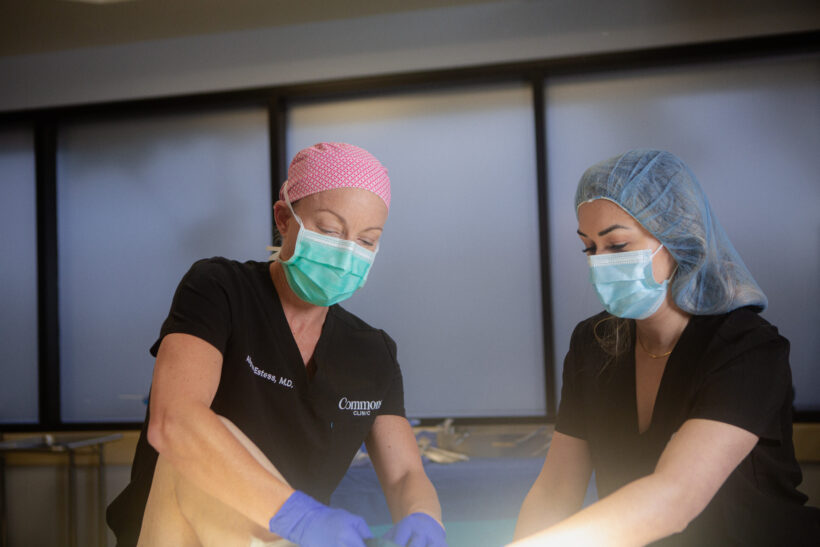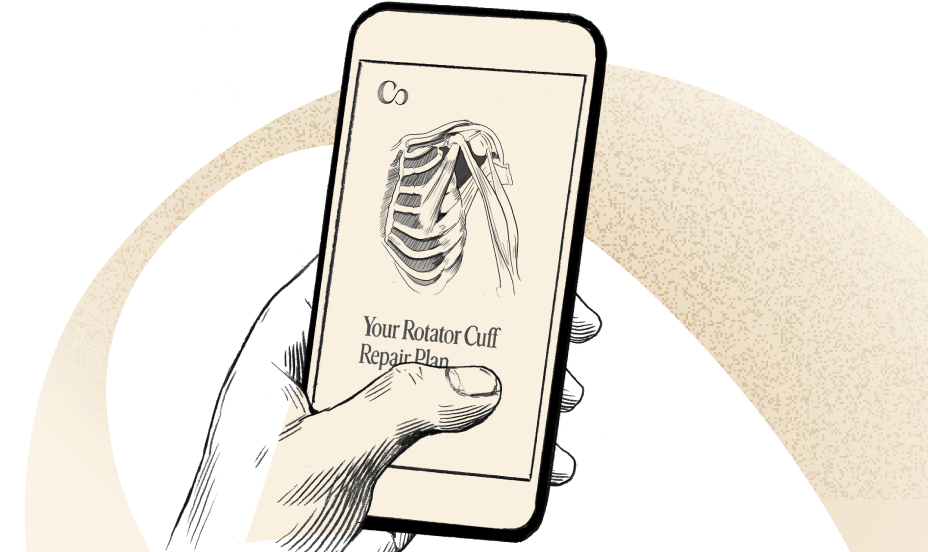Joint Replacement: 5 Essential Things Your Surgeon Wants You to Know
Arthritis pain can be debilitating. This dull, aching, and sometimes sharp pain is often accompanied by tenderness, swelling, and stiffness in major joints like the hip, knee, and shoulder. If you’re struggling with osteoarthritis and having difficulty with everyday activities, joint replacement surgery, also known as joint arthroplasty, may be a solution to eliminate pain and improve mobility.
Joint replacement surgery is on the rise, with total knee and hip replacements now topping the list of the most common elective orthopedic procedures performed worldwide. For those enduring the daily pain of moderate to severe osteoarthritis, the prospect of eliminating the pain source can be very appealing. And with modern technology, almost any joint can now be replaced—the hips, knees, shoulders, elbows, wrists, and ankles, as well as some fingers and toes.
The dream of pain relief, combined with the reality of advancing surgical techniques, has rapidly increased the popularity of joint replacement procedures. With proven results and high satisfaction ratings, total joint replacement surgery can offer life-changing outcomes. And the best thing you can do to get ready is to understand what to expect before, during, and after your surgery.
We asked Dr. Ben Schwartz, Commons Clinic Senior Clinical Fellow, how he prepares his patients for successful total joint replacement. Straight from an orthopedic surgeon himself, here are the five (plus a bonus) most important things you need to know before your total joint replacement surgery.

1. Pain and Post-Surgery Symptoms: What to Expect
Joint replacement surgeries do exactly as the name suggests: replace the damaged joint with an artificial one, effectively “curing” arthritis. When arthritis is gone, so is arthritis pain. But that doesn’t mean you’ll be pain-free right after surgery. In fact, you should absolutely expect to still have pain immediately after surgery, but be prepared for the pain to feel different.
Key Points to Know:
- Post-surgical pain: Expect pain right after surgery related to your new incision and the muscles, bones, and tissues affected by the procedure. The good news is that, while your arthritis pain may have felt like it was getting worse by the day before surgery, post-surgical pain improves over time.
- Soreness in surrounding muscles & joints: For a few months after surgery, you may notice some leftover discomfort from muscles and other joints, often the result of altered mechanics and compensation patterns your body developed before surgery. When you’ve had arthritis for a while, surrounding muscles and joints can experience greater stress and strain. And, while a replacement surgery won’t instantly resolve pain caused by tight muscles or abnormal movement patterns, these issues, too, will get better with time.
- Nuisance symptoms: Most patients report life-changing pain relief and improved mobility in the years following their joint replacement, but some do experience “nuisance symptoms” (particularly following knee replacement). Nuisance symptoms are ongoing sensations following the surgery—things like numbness around the incision, swelling, stiffness, joint clicking, and difficulty kneeling on replaced knees. These sensations are typically minor, and while nuisance symptoms are common, they don’t typically impact overall satisfaction post-surgery. In fact, according to Dr. Schwartz, studies show that 90-95% of joint replacement patients are satisfied with the outcome of their procedure.
So for most, the value of relieving arthritis pain far outweighs any minor sensations that may linger after surgery. Dr. Schwartz prepares his patients for these lingering symptoms because, in his experience, most patients eventually forget about their hip replacements, but those with knee replacements often remain “aware” of their artificial joint.
2. Joint Replacement Recovery Timeline
Like most major surgeries, the recovery process after total joint replacement is gradual. Several factors, including the type of joint replacement, the complexity of the procedure, your level of pain/activity before surgery, and your overall health, affect the timeline for full recovery. For all patients, recovery takes time, but the end result is well worth it.
According to Dr. Schwartz, the first six weeks are typically the most difficult for patients. This initial healing phase is marked by higher pain levels, increased swelling, more mobility limitations, and greater difficulties with daily activities. During this time, you’ll want to lean on others and have a family member, friend, or care partner available to help you at home. After six weeks, most patients start to feel like they are turning the corner toward day-to-day normalcy.
Every patient’s journey to “full recovery” looks a little different because “full recovery” doesn’t mean the same thing to everyone. If you’re looking to perform basic day-to-day tasks without pain, you may achieve that more quickly than someone who wants to return to running or skiing. Either way, Dr. Schwartz tells his patients that “full recovery,” including full strength and joint mobility restoration, can take up to a year, so patience is key. Remember, recovery is not linear—you may have good days and not-so-good days, but every step forward is a step in the right direction.
3. Post-Surgery Sleep Issues: How to Manage Sleep Disruptions
Perhaps surprisingly, one of the most common patient complaints after joint replacement surgery is difficulty sleeping. Finding a comfortable position can be challenging as muscles around the joint tend to tighten when you stop moving. Additionally, changes to routine, anxiety, stress, and some pain medications, especially narcotics, can disrupt sleep patterns.
Pain can become more pronounced overnight because during the day, distractions tend to make pain less noticeable, and lying down to go to sleep allows your mind to notice pain more acutely. The physical toll of the day’s activities can also catch up with you—it’s common to experience delayed soreness and discomfort, especially as you start to push the limits of your activity level.
It can take a few months after surgery to sleep comfortably through the night. But if you’re like most people with moderate to severe arthritis, you’re already familiar with disrupted sleep. In fact, according to the Arthritis Foundation, nearly 80% of people with arthritis have difficulty sleeping. So while it may take some time to get those restful nights back after surgery, three months is short compared to indefinite sleepless nights due to arthritis.
Tips to Improve Sleep:
- Pain management: Stay on top of your pain control to minimize sleep disturbances.
- Sleeping positions: Try different positions and avoid lying directly on the operated side if it’s uncomfortable.
- Time & Patience: As your pain decreases and you return to a normal routine, your sleep quality should improve.
4. Artificial Joint Longevity: How Long Will Your Joint Last?
You may be wondering about the possibility of outliving your joint replacement—and understandably so. Who wants to need surgery again at 80 years old? According to Dr. Schwartz, with advances in surgical techniques and joint hardware, about 80-90% of joint replacements are good for the patient’s lifetime. Of course, this depends on your age when you have your joint replaced and your lifespan. But Dr. Schwartz typically reassures his patients that joint replacement is a long-term solution and longevity isn’t something to be too concerned about.

A 2017 study followed more than 60,000 people who had a hip replacement; of them, 15% required revision at the 20-year mark. And of the nearly 55,000 people who had a knee replacement, 10.3% required revision after 20 years. But let’s remember that these individuals had their original joint replacements in the 1990s, before modern-day implants. A lot has changed since then, and it’s safe to assume that surgical technique innovation and joint hardware improvements will continue to enhance the longevity of joint replacements in 2025 and beyond.
Of course, age is still a factor impacting joint longevity, and patients seeking hip and knee replacement are trending younger. In fact, according to the American Academy of Orthopedics, by 2030, people younger than 65 will account for more than half of hip replacements and more than 60% of knee replacements. And according to that same 2017 study, revision risk increases significantly when you have surgery at a younger age—up to 35% for individuals (particularly males) who had their joint replacement in their early 50s.
So, what does this mean for you if you’re under 60? Well, in reality, your risk of needing a revision is higher, but this is to be expected—you’ll probably put more mileage on your joint than someone having surgery in their 60s or 70s. And although we may not yet have long-term studies evaluating modern-day implants, early and mid-term results of hip and knee replacements suggest that longevity may be improving, even for younger patients. That said, revision surgery is an option, and many skilled surgeons specialize in complex revision procedures. Ultimately, you must consider whether the pain relief and improved quality of life you will gain now outweigh the potential need for future revision surgery. Often, the answer is yes.
So, if you did need a revision, how would you know? According to Dr. Schwartz, a new onset of pain, clicking, instability, or stiffness in a replaced joint that was previously asymptomatic is a good reason to make an appointment with your provider.
5. Post-Surgery Limitations: What You Can and Can’t Do After Joint Replacement
As patients seeking joint replacement get younger, the desire to push the limits of artificial joints with high-level sports and activities also increases. Historically, patients would spend multiple days in the hospital following a joint replacement surgery and leave with strict, lifelong activity restrictions. But these days, many joint replacements are outpatient procedures, and patients are back to running, cycling, skiing, and playing sports with their artificial joints.
In most cases, Dr. Schwartz says he advises his patients post-hip or knee replacement to simply avoid ultradistance marathons. Yes, patients can still run—just not extreme distances—and yes, they can still play sports, and lead highly active lives. While a new joint may not keep you from running that 5K, low-impact activities like swimming, cycling, and walking might still be a better choice for some, especially if they have known arthritis or pain in other joints. Also, while returning to high-level activity is safe for most patients, it may not feel comfortable or natural.
Activity recommendations can vary widely based on the joint you had replaced, the complexity of the procedure, and your unique health condition and circumstances. It’s important to talk to your surgeon about your goals post-joint replacement and follow their specific recommendations. Finally, setting realistic expectations for your artificial joint is crucial to a successful outcome.
Bonus Tip: Consider Pre-Surgery Exercise or Pre-Habilitation (Pre-hab)
Preparing yourself mentally and physically for surgery is essential for a successful recovery. Now that you know more about what to expect after surgery, let’s explore a few things you can do before surgery to set yourself up for the best possible outcome:
- Pre-habilitation (Pre-hab): If you’ve had pain for a while, chances are you also have some joint stiffness, decreased mobility, and muscle weakness. While your new joint will eventually help address these issues, it won’t resolve them immediately. Optimize your strength and range of motion before surgery by working with a physical therapist as part of a formal “pre-habilitation” (pre-hab) to prepare your body for surgery.
- Exercise routine at home: A formal PT program isn’t necessary for everyone—you may choose to follow a less structured strength and flexibility routine at home. Regardless of the approach you take, any positive changes made before your surgery will contribute to a faster and smoother recovery process. Plus, many of the exercises you perform during “pre-hab,” at home or with a PT, will be the same ones you will do after surgery, so becoming familiar with them ahead of time will give you an advantage.
- General activity: As far as activity recommendations before surgery, Dr. Schwartz often reassures his patients that they won’t further damage their arthritic joint by being active. So while you should avoid causing unnecessary pain, the benefit of regular physical activity outweighs possible downsides for your arthritic joint. Maintaining a basic level of physical fitness and participating in low-impact exercise before surgery can help enhance your overall health and set you up for a successful outcome.
Conclusion: Preparing for Joint Replacement Surgery
Joint replacement surgery is an increasingly effective long-term solution for moderate to severe arthritis pain, and its popularity has grown significantly among adults aged 50+. Some may even say it’s “trendy” to get a joint replacement. If you’re after life-changing results, the best thing you can do is prepare yourself before surgery for a successful recovery.
Congratulations! You’re now better prepared for surgery with these 5 essential things your orthopedic surgeon wants you to know before your procedure.

Key takeaways:
- Post-operative pain should improve quickly, and the arthritis pain you know all too well will finally be gone. Hallelujah. You may experience nuisance symptoms, but the pain relief outweighs these minor sensations for most people.
- Recovery happens in phases—the first six weeks are the hardest, and it can take up to a year to be “fully recovered.”
- Sleep difficulties are common after joint replacement. Work toward returning to your normal routine, managing stress, being more active, and staying on top of your pain control to improve your sleep quality.
- Joint longevity isn’t a big concern. You probably won’t outlive your new joint, but the younger you are, the more likely you are to need a revision. If you do need a revision, you have options.
- Returning to your favorite sports, leisure, and physical activities is possible after joint replacement, but ultimately, it’s important to follow your surgeon’s activity recommendations.
- Pre-hab just makes sense. The stronger, healthier, and more mentally prepared you are for surgery, the more likely you are to have a faster recovery and better outcomes. In other words, you get out of the surgery what you put into it.
Want to learn more about joint replacement surgery? Check out our Total Joint Replacement 101 article.
Advanced Joint Program at Commons Clinic
Commons Clinic’s total joint replacement and reconstruction specialists are among the most skilled surgeons in the country, offering joint resurfacing, partial replacement, total replacement, and complex revision surgeries. Dedicated to research and the use of cutting-edge surgical technology, our advanced total joint program helps patients get back in action faster. Contact us today.






 (310) 423-9834
(310) 423-9834